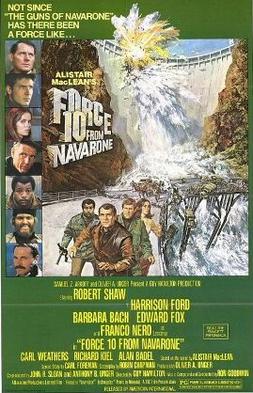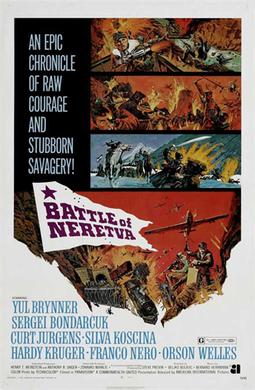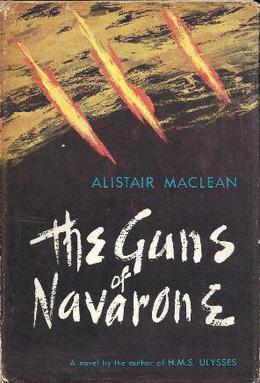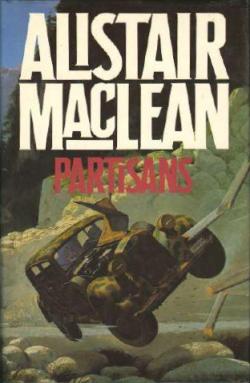
The Chetniks, formally the Chetnik Detachments of the Yugoslav Army, and also the Yugoslav Army in the Homeland and informally colloquially the Ravna Gora Movement, was a Yugoslav royalist and Serbian nationalist movement and guerrilla force in Axis-occupied Yugoslavia. Although it was not a homogeneous movement, it was led by Draža Mihailović. While it was anti-Axis in its long-term goals and engaged in marginal resistance activities for limited periods, it also engaged in tactical or selective collaboration with Axis forces for almost all of the war. The Chetnik movement adopted a policy of collaboration with regard to the Axis, and engaged in cooperation to one degree or another by both establishing a modus vivendi and operating as "legalised" auxiliary forces under Axis control. Over a period of time, and in different parts of the country, the movement was progressively drawn into collaboration agreements: first with the puppet Government of National Salvation in the German-occupied territory of Serbia, then with the Italians in occupied Dalmatia and Montenegro, with some of the Ustaše forces in northern Bosnia, and, after the Italian capitulation in September 1943, with the Germans directly.

Case White, also known as the Fourth Enemy Offensive, was a combined Axis strategic offensive launched against the Yugoslav Partisans throughout occupied Yugoslavia during World War II. It was one of the most significant confrontations of World War II in Yugoslavia. The offensive took place in early 1943, between 20 January and mid-to-late March. The Axis operation prompted the Partisan Supreme Command to enact its plans to drive toward eastern Herzegovina, Sandžak and Montenegro.

Case Black, also known as the Fifth Enemy Offensive in Yugoslav historiography and often identified with its final phase, the Battle of the Sutjeska was a joint attack by the Axis taking place from 15 May to 16 June 1943, which aimed to destroy the main Yugoslav Partisan force, near the Sutjeska river in south-eastern Bosnia. The failure of the offensive marked a turning point for Yugoslavia during World War II. It was also the last major German-Italian joint operation against the partisans.

Force 10 from Navarone is a 1978 British war film loosely based on Alistair MacLean's 1968 novel of the same name. It is a sequel to the 1961 film The Guns of Navarone. The parts of Mallory and Miller are played by Robert Shaw, and Edward Fox, succeeding in the roles originally portrayed by Gregory Peck and David Niven. It was directed by Guy Hamilton and also stars Harrison Ford, Carl Weathers, Barbara Bach, Franco Nero, and Richard Kiel.

Battle of Neretva is a 1969 Yugoslavian epic partisan film. Written by Stevan Bulajić and Veljko Bulajić, and directed by Veljko Bulajić, it is based on the true events of World War II. The Battle of the Neretva was due to a strategic plan for a combined Axis powers attack in 1943 against the Yugoslav Partisans. The plan was also known as the Fourth Enemy Offensive and occurred in the area of the Neretva river in Bosnia and Herzegovina.

Krsto Popović was an officer of the Montenegrin Army who fought in the Balkan Wars and in the First World War.

Operation Uzice was the first major counter-insurgency operation by the German Wehrmacht on the occupied territory of the Kingdom of Yugoslavia during World War II. The operation was directed against the Užice Republic, the first of several "free territories" liberated by the Yugoslav Partisans. It was named after the town of Užice, and is associated with the First Enemy Offensive in Yugoslavian historiography. The security forces of the German-installed puppet regime of Milan Nedić also participated in the offensive.

Operation Trio was the first large-scale joint German-Italian counter-insurgency operation of World War II conducted in the Independent State of Croatia (NDH), which included modern-day Bosnia and Herzegovina. It was carried out in two phases within eastern Bosnia from 20 April to 13 May 1942, with Ustaše militia and Croatian Home Guard forces taking part on the Axis side. The aim of the operation was to target all insurgents between Sarajevo and the Drina river in eastern Bosnia. These included the communist-led Yugoslav Partisans and Serb nationalist Chetniks. Differentiating between the rank and file of the two insurgent factions was difficult, as even the communist-led insurgent groups consisted mainly of Serb peasants who had little understanding of the political aims of their leaders.

The Guns of Navarone is a 1961 action adventure war film directed by J. Lee Thompson from a screenplay by Carl Foreman, based on Alistair MacLean's 1957 novel of the same name. Foreman also produced the film. The film stars Gregory Peck, David Niven and Anthony Quinn, along with Stanley Baker, Anthony Quayle, Irene Papas, Gia Scala, Richard Harris and James Darren. The book and the film share a plot: the efforts of an Allied commando unit to destroy a seemingly impregnable German fortress that threatens Allied naval ships in the Aegean Sea.

The Guns of Navarone is a 1957 novel about the Second World War by Scottish writer Alistair MacLean that was made into the film The Guns of Navarone in 1961. The story concerns the efforts of an Allied commando team to destroy a seemingly impregnable German fortress that threatens Allied naval ships in the Aegean Sea and prevents over 1,200 isolated British Army soldiers from being rescued.

Operation Halyard, known in Serbian as Operation Air Bridge, was an Allied airlift operation behind Axis lines during World War II. In July 1944, the Office of Strategic Services (OSS) drew up plans to send a team to the Chetniks force led by General Draža Mihailović in the German-occupied Territory of the Military Commander in Serbia for the purpose of evacuating Allied airmen shot down over that area. This team, known as the Halyard team, was commanded by Lieutenant George Musulin, along with Master Sergeant Michael Rajacich, and Specialist Arthur Jibilian, the radio operator. The team was detailed to the United States Fifteenth Air Force and designated as the 1st Air Crew Rescue Unit. It was the largest rescue operation of American airmen in history.

Partisans is a novel by the Scottish author Alistair MacLean, first published in 1982. MacLean used portions of the plot from the 1978 film Force 10 from Navarone as the basis of the plot for this novel. MacLean reverted to the theme of the Second World War, with which he was successful and highly popular in his early career.

Operation Alfa was an offensive carried out in early October 1942 by the military forces of Italy and the Axis puppet state, the Independent State of Croatia (NDH), supported by Chetnik forces under the control of vojvoda Ilija Trifunović-Birčanin. The offensive was directed against the communist-led Partisans in the Prozor region, then a part of the NDH. The operation was militarily inconclusive, and in the aftermath, Chetnik forces conducted mass killings of civilians in the area.
In 1941 when the Axis invaded Yugoslavia, King Peter II formed a Government in exile in London, and in January 1942 the royalist Draža Mihailović became the Minister of War with British backing. But by June or July 1943, British Prime Minister Winston Churchill had decided to withdraw support from Mihailović and the Chetniks he led, and support the Partisans headed by Josip Broz Tito, even though this would result in "complete communist control of Serbia". The main reason for the change was not the reports by Fitzroy Maclean or William Deakin, or as later alleged the influence of James Klugmann in Special Operations Executive (SOE) headquarters in Cairo or even Randolph Churchill, but the evidence of Ultra decrypts from the Government Code and Cipher School in Bletchley Park that Tito's Partisans were a "much more effective and reliable ally in the war against Germany". Nor was it due to claims that the Chetniks were collaborating with the enemy, though there was some evidence from decrypts of collaboration with Italian and sometimes German forces.

Vojislav Lukačević was a Serbian Chetnik commander in the Kingdom of Yugoslavia during World War II. At the outbreak of war, he held the rank of captain of the reserves in the Royal Yugoslav Army.

Lieutenant Colonel Zaharije Ostojić was a Montenegrin Serb and Yugoslav military officer who served as the chief of the operational, organisational and intelligence branches of the Chetnik Supreme Command led by Draža Mihailović in Yugoslavia during World War II. He was a major in the Royal Yugoslav Army Air Force prior to the Axis invasion of Yugoslavia, and was involved in the coup that deposed Prince Paul of Yugoslavia on 27 March 1941. After the coup, he escorted Prince Paul to exile in Greece, and was in Cairo during the invasion in April. In September 1941, he was landed on the coast of the Italian governorate of Montenegro along with the British Special Operations Executive officer Captain Bill Hudson and two companions. He escorted Hudson to the German-occupied territory of Serbia and introduced him to the Yugoslav Partisan leader Josip Broz Tito at Užice, then accompanied Hudson to Ravna Gora to meet Mihailović. Ostojić soon became Mihailović's chief of staff, and after the German attempt to capture the Chetnik leader during Operation Mihailovic in December 1941, brought the Chetnik Supreme Command staff to Montenegro where they were re-united with Mihailović in June 1942. During the remainder of 1942, Ostojić launched a counter-attack against Ustaše troops of the Independent State of Croatia returning to the eastern Bosnian town of Foča where they were expected to continue their genocidal anti-Serb policies. As many as 2,000 local Muslims were subsequently killed in the town by forces under Ostojić's command. Ostojić later oversaw large-scale massacres of civilians and burning of Muslim villages in the border region between Montenegro and the Sandžak.

Uroš Drenović was a Bosnian Serb military commander in the central Bosnia region of the fascist puppet state known as the Independent State of Croatia (NDH), led by the Ustaše, during World War II. After distinguishing himself in resisting the Ustaše alongside communist-led rebels, Drenović betrayed the communist-led Partisans and began to collaborate with the Ustaše, Italians and Germans against them.

Brigadier Charles Douglas Armstrong was a British Army officer in World War I and World War II. In the latter conflict he was the head of the British Special Operations Executive (SOE) liaison mission to the Chetnik forces of Draža Mihailović in Yugoslavia from July 1943 to early 1944.

Stanley William Bailey was a British Army officer in World War II, who reached the rank of colonel and was most notable for being the head and then political advisor of the British Special Operations Executive Liaison Mission to the Chetnik Forces of Draža Mihailović from December 25, 1942—January 29, 1944. British policy toward Mihailović was shaped by the regular reports from Bailey. Bailey's position on General Mihailović was influential in undermining the relationship between Mihailović and the Chetniks with Churchill and the British Foreign Office, and consequently with the other Allied nations.

The Bridge on the Neretva is the memorial bridge on the Neretva river, in Jablanica, Bosnia and Herzegovina. Bridge is part of the Memorial of the Battle on the Neretva dedicated to the famous World War II battle, fought between Yugoslav partisans and Axis forces, as part of the 4th Enemy Offensive in February–March 1943. The battle is also known as the "Battle for the Wounded on the Neretva" or simply the "Battle for the Wounded".



















